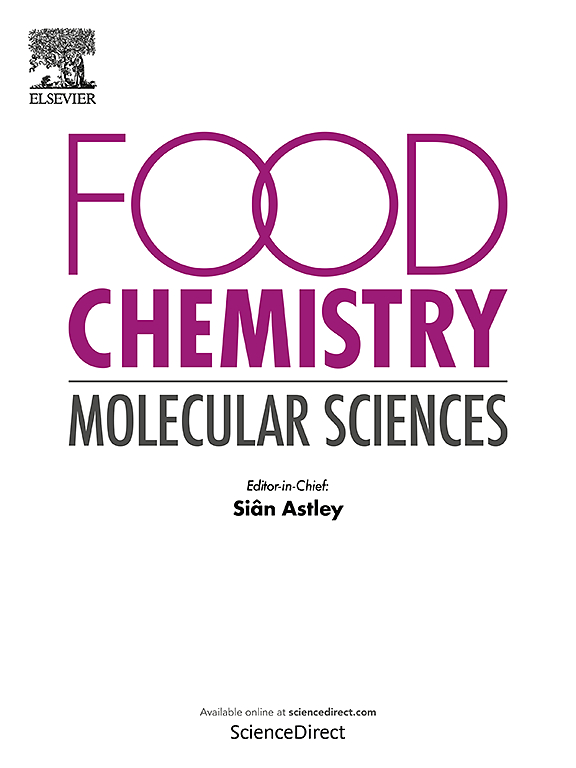综合转录组学和代谢组学分析揭示了棉籽蛋白质和油脂变异的驱动因素
IF 4.7
Q2 FOOD SCIENCE & TECHNOLOGY
引用次数: 0
摘要
棉籽以其高品质而闻名,其蛋白质和油脂含量在不同棉花品种之间存在较大差异。本研究通过分析两个棉花品种种子发育过程中的蛋白质和油脂积累模式、转录组学和代谢组学,探讨了这些差异背后的调控机制。结果表明:花后15 ~ 30 d蛋白质和油脂积累较快,40 d后品种间差异显著;在40 DPA时,差异表达基因(DEGs)在碳分配、脂肪酸降解和氮吸收途径中富集。代谢组学鉴定出脂质、类脂分子和有机酸是关键的差异积累代谢物(dam)。此外,还鉴定出与氮源吸收相关的基因GhNIR1。该基因在棉花中的病毒诱导基因沉默(VIGS)导致根、茎和叶中蛋白质含量显著降低。这些发现为棉籽蛋白质和油脂的积累提供了新的思路,并为改善棉籽营养品质提供了遗传资源。本文章由计算机程序翻译,如有差异,请以英文原文为准。

Integrated transcriptomic and metabolomic analysis reveals drivers of protein and oil variation in cottonseed
The protein and oil content in cottonseed, known for their high quality, exhibits substantial variation across different cotton varieties. This study explored the regulatory mechanisms behind these differences by analyzing protein and oil accumulation patterns, transcriptomics, and metabolomics in two cotton varieties during seed development. Results showed that protein and oil rapidly accumulated between 15 and 30 days post-anthesis (DPA), but significant differences between varieties emerged after 40 DPA. Differentially expressed genes (DEGs) at 40 DPA were enriched in carbon allocation, fatty acid degradation, and nitrogen absorption pathways. Metabolomics identified lipids, lipid-like molecules, and organic acids as key differentially accumulated metabolites (DAMs). Furthermore, the gene GhNIR1, associated with nitrogen source absorption, was identified. Virus-induced gene silencing (VIGS) of this gene in cotton resulted in a significant reduction in protein content in the roots, stems, and leaves. These findings provide insights into protein and oil accumulation and offer genetic resources for improving cottonseed nutritional quality.
求助全文
通过发布文献求助,成功后即可免费获取论文全文。
去求助
来源期刊

Food Chemistry Molecular Sciences
Agricultural and Biological Sciences-Food Science
CiteScore
6.00
自引率
0.00%
发文量
83
审稿时长
82 days
期刊介绍:
Food Chemistry: Molecular Sciences is one of three companion journals to the highly respected Food Chemistry.
Food Chemistry: Molecular Sciences is an open access journal publishing research advancing the theory and practice of molecular sciences of foods.
The types of articles considered are original research articles, analytical methods, comprehensive reviews and commentaries.
Topics include:
Molecular sciences relating to major and minor components of food (nutrients and bioactives) and their physiological, sensory, flavour, and microbiological aspects; data must be sufficient to demonstrate relevance to foods and as consumed by humans
Changes in molecular composition or structure in foods occurring or induced during growth, distribution and processing (industrial or domestic) or as a result of human metabolism
Quality, safety, authenticity and traceability of foods and packaging materials
Valorisation of food waste arising from processing and exploitation of by-products
Molecular sciences of additives, contaminants including agro-chemicals, together with their metabolism, food fate and benefit: risk to human health
Novel analytical and computational (bioinformatics) methods related to foods as consumed, nutrients and bioactives, sensory, metabolic fate, and origins of foods. Articles must be concerned with new or novel methods or novel uses and must be applied to real-world samples to demonstrate robustness. Those dealing with significant improvements to existing methods or foods and commodities from different regions, and re-use of existing data will be considered, provided authors can establish sufficient originality.
 求助内容:
求助内容: 应助结果提醒方式:
应助结果提醒方式:


